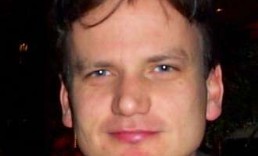
Roscheisen
SAN FRANCISCO-Nanosolar Inc. said Wednesday it will
select a Bay
Area location for development of the world’s largest solar
cell
fabrication facility, one that uses new less expensive
technology.
The Palo Alto, CA-based company said it will select San
Francisco,
San Jose or Santa Clara for the plant before then end of
July. A
complementary solar panel fabrication facility is expected
to be
located in Berlin, Germany, where the company also has a
base of
operations.
The
company is
presently in pilot production of its paper-thin flexible
solar cells
in Palo Alto and has started ordering volume production
equipment
for the new factory. Nanosolar says the new plant could
produce
upward of 1 million solar panels every year, enough to
produce 430
megawatts of power--nearly triple the output of all existing
solar
panel manufacturing facilities in the US.
Nanosolar began pursuing its goal of affordable solar
electricity
in 2002, shortly after receiving seed money from Google
founders
Larry Page and Sergey Brin. The company’s CEO, R. Martin
Roscheisen,
sold his Internet company eGroups to Yahoo for $432 million
in 2000.
Roscheisen says the past four years have been spent in
commercial
research and development, including two years of
manufacturing
process development and engineering. The company now
believes it can
mass produce a fundamentally less expensive solar cell. In
Berlin,
the cells will be assembled into panels that will be shaped
to fit
on a variety of building components. The company reportedly
already
has arrangements to sell the panels for use on the rooftops
of
commercial and residential buildings and as stand-alone
power
plants.
What’s different about Nansolar’s technology is that it
does not
make use of silicon crystals, which is how 90% of the
world’s solar
energy is currently produced. Instead, Nanosolar and others
such as
San Jose-based Miasole are using a copper alloy that also
absorbs
light and creates electricity.
Nanosolar’s head of technology says its method
of putting the alloy on a thin plastic film “overcomes the
complexity, high cost, and yield and scalability limitations
associated with vacuum-based processes” and “allows us to
produce
cells very inexpensively and assemble them into panels that
are
comparable in efficiency to that of high-volume silicon
based PV
panels."
Werner Dumanski, Nanosolar's head of manufacturing, says
the
company’s printing process makes the fully-loaded cell cost
--
including materials, consumables, energy, labor, facility,
and
capital – “less than the depreciation expense that vacuum
thin-film
companies have to pay for the equipment that produces their
cells."
The size and cost of the facility was not released; however,
Dumanski says the cost would be much less than the estimated
$1
billion it would cost to develop a similar-capacity factory
using
conventional solar technology.
According to Clean Edge, a business research firm based
in
Oakland, global solar markets reached $11.2 billion in 2005,
up 55%
from 2004. By comparison, Global wind markets reached $11.8
million
in 2005, up 47% from 2004, while the market for biofuels hit
$15.7
billion globally in 2005, up about 15% from 2004, according
to Clean
Edge. By 2015, Clean Edge models show solar photovoltaics
(including
modules, system components, and installation) growing to
$51.1
billion, wind power expanding to $48.5 billion and biofuels
growing
to $52.5 million.
The world's largest existing solar factories are in
Japan, run by
Sharp and Kyocera. At full capacity, Nanosolar’s new plant
wouldn’t
move the US ahead of Japan, but it would push it ahead of
the
current No. 2 solar producer, Europe.


![GlobeSt.
[smithers] [ad pool: sanfrancisco]](GlobeSt100MM_files/logo.gif)
